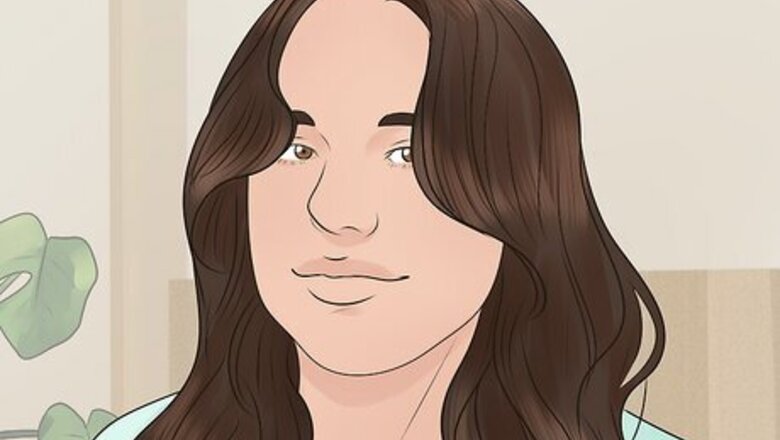
views
Types of Men’s & Women’s Hairlines
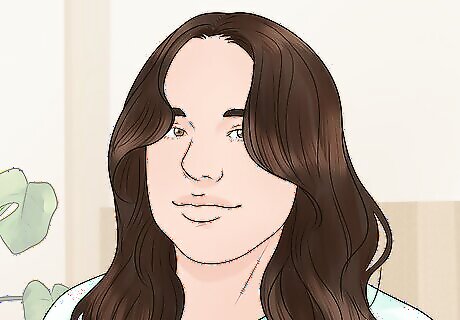
Round (common in men and women) A round hairline features hair that curves downward, with its lowest point near the center of the forehead. The hair might recede over or around the temples, but there’s a clear bowl-shaped curve across the forehead. Who has it? Round hairlines are commonly found on both men and women. Some people also refer to an upside-down U shape as a round hairline, but an upside-U is typically referred to as a “bell-shaped” hairline.
M-shaped (common in men and women) An M-shaped hairline is one where the hair comes to a downward point near the middle of the forehead, with straight lines of hair going back, then straight lines going down to the temples. Who has it? M-shaped hairlines are found on both men and women, though women may be more likely to have it, since women more often maintain hair near the center of their forehead as they age.
Widow’s Peak (common in men and women) A widow’s peak is when the hair comes to a downward point near the center of the forehead, and curves up near the temples. Who has it? This hairline is found on both men and women, though women may be more likely to have it, since women more often maintain hair near the center of their forehead.
Rectangular (common in men and women) A rectangular hairline is a straight line of hair across the forehead, with straight lines of hair going down to the temples. The hair might look slightly curved because of the curve of the forehead, but when looked at straight-on, it forms a straight line. Who has it? Rectangular hairlines are common on both men and women.
Cowlick (common in men and women) A “cowlick” is a curl of hair that tends to do its own thing, even when all the rest of the hair is forming some kind of pattern. On a hairline, a cowlick can make it look like the hairline is uneven, even if it’s straight or rounded. Who has it? Cowlick hairlines are common on both women and men.
High (common in men and women) A high hairline is any hairline that sits high on the forehead, making the forehead look larger. It can have any shape (M, U, widow’s peak, etc.), but the defining trait it that it rests farther back on the head. Who has it? High hairlines are found on both men and women, especially people with receding hairlines. A high hairline might also be known as a “big forehead” hairline since more of your forehead is exposed.
Middle (common in men and women) A middle hairline is any kind of hairline that sits midway between the brows and the crown, or top, of your head. It can be any shape (M, U, widow’s peak, etc.), as long as it rests near the middle of the upper face. This is often subjective, though! Who has it? Middle hairlines are found on both men and women.
Low (common in men and women) Low hairlines are any hairline that comes down closer to the brow than average, making for a short or small forehead. They can be any shape (M, U, widow’s peak, etc.), as long as they’re low on the head. Who has it? Low hairlines are found on both women and men.
Mature (common in men and women) A “mature” hairline is one that’s receding with age, but still looks pretty solid and healthy. Receding hairlines happen to everyone, but not everyone loses all their hair. This is when the mature hairline shows itself. Who has it? Mature hairlines are found on both women and men.
U-shaped (most common in men) A U-shaped hairline is very similar to an M-shaped hairline, but the hair that comes down near the center of the forehead is rounded in a U-shape, rather than pointed in an M-shape. It’s like a more dramatic round hairline. Who has it? U-shaped hairlines are most commonly found on men as their hairlines recede with age, but women may also have it.
Uneven (most common in men) Uneven hairlines are where the hairline has a seemingly random or unusual pattern, or no real pattern at all. It may seem jagged, thin, zig-zaggy, or curvy across the forehead. Usually it’s caused by receding hair. Who has it? Both men and women can have uneven hairlines, but they’re more common in men with receding hair.
Bell-shaped (most common in women) A bell-shaped hairline is when the hair forms an upside-down U on the forehead, or a dome shape that often resembles a bell. Dramatic bell curves that rise high on the forehead may be a symptom of a receding hairline, though it can also be default and natural. Who has it? When you hear “bell hairline,” it usually refers to women’s hairlines, but men can also have it, especially if they’re experiencing a receding hairline.
Triangular (most common in women) A triangular hairline is where the hair rises to a peak near the center of the forehead, and slants in strait lines down toward the temples, creating a triangular shape on the forehead. Who has it? When you hear “triangular hairline,” it usually refers to women’s hairlines, but men can also have it, especially if they’re experiencing a receding hairline.
What’s the best hairline?
People often consider “good hairlines” to be thick, low, and even. There’s no perfect or “best” hairline shape; hairlines come in all shapes and sizes, and different people find different hairlines attractive. That said, we can tell you what most people think a good hairline is based on the common reasons why people try to correct their hairlines, which are: Thick: Good hairlines usually involve thick, healthy hair. You’ll always be able to see through to the scalp at your hairline, but people tend to like more hair that hides the scalp. Low(ish): What this means is “not high.” People tend to think good hairlines are medium or low, while hairlines that are high on the scalp are often associated with receding hair. Even: This means that the hairline is consistent and a “regular” shape, like an M, widow’s peak, rectangle, or round. These types of hairlines are common, and so are seen as most attractive.
Maintaining Your Hairline
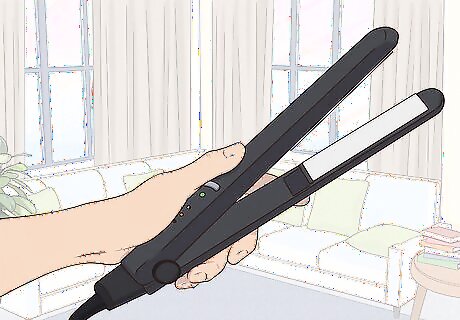
Avoid heat when you’re drying or styling your hair. Research shows that regularly exposing your hair to heat, like with hair irons, straighteners, or even just hot air hair dryers, causes damage and even hair loss. When drying your hair, use a cool or medium setting. Save straightening your hair for special occasions.
Avoid wearing tight hats or anything that restricts your hairline. “Wrapping a tight headband around your hairline causes your hairline to start to break off,” Foster tells us. Tight hats, headbands, or other accessories cause friction on your scalp, weakening the hairline. Foster adds that materials like silk and satin are less likely to cause friction, but to avoid cotton. Sweatbands and bonnets are often necessary, like for workouts or hair styling. Just be sure not to leave them on when you don’t need them.
Avoid tight hairstyles that pull on your hair. Tight hairstyles can cause traction alopecia, which is when tension weakens or destroys hair roots around your hairline. Things like tight ponytails or protective hairstyles can cause traction alopecia over time. That said, it’s not something that happens overnight; it usually takes years of regular tight hairstyles for traction alopecia to show. Foster recommends, if you wear protective hairstyles like braids, that you “leave that portion of their hair [the hairline] out” to protect it.
Go light on hair products, and avoid any with alcohol. Many ingredients in styling gels, shampoos, and conditioners like rosemary extract or Polysorbate 60 may be linked to unusual hair growth. While the experts are still doing the research, it’s always best to ease up on hair products and go more natural. Foster especially warns against products that contain alcohol, which may be especially damaging. When in doubt, use products marketed as “mild” or “natural.” Also, avoid washing your hair daily with shampoo and conditioner. Often, washing every other day or even every few days is enough.
Use a wide-tooth comb or gentle brush, and comb it dry. Combing or brushing your hair while it’s wet can cause damage and breakage, and using fine-toothed combs or brushes can do the same. When you’re detangling your hair, aim to use a wide-toothed comb, and comb it when it’s completely dry.
Stay hydrated and eat a balanced diet. Hair loss can be caused by dehydration, and also a lack of important vitamins like vitamins B, C, iron, zinc, and protein. Experts recommend drinking about 11.5-16.5 cups (2.7-3.7 liters) of water each day, and eating a balanced diet to get your necessary daily vitamins and minerals. Great foods for healthy hair growth include green leafy veggies, fish, eggs, oats, citrus fruits, and seeds and nuts.
Signs of a Receding Hairline
Take photos of your scalp and watch for a thinning “M” shape. A receding hairline comes with many different signs to look for, but they all involve changes in your hair. Lift the hair at your hairline and take a photo in the mirror. In about 6-12 months, compare your current hairline to your photo, and look for these common signs of hair loss: Hair thinning or moving back around your temples, or at the “corners” of your forehead. Excessive shedding, or more shedding than usual. A progressively more dramatic “M” shape in your hairline. Seeing more of your scalp through your hair than usual. Changes in your hair texture or volume.
Changing Your Hairline
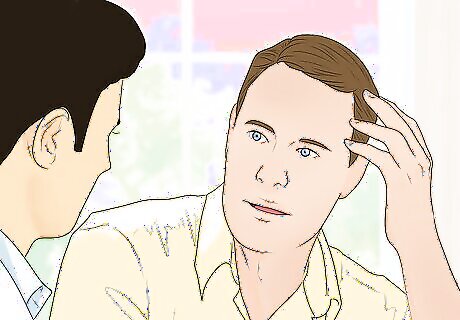
Ask your doctor about hair growth medications or supplements. These days, hair loss supplements for both men and women are common, easy to get, and proven to help, though you may need your doctor’s approval. Ask your doctor about medications like Minoxidil or Finasteride, which can prevent and even reverse hair loss and receding hairlines. These medications come in many forms, from pills to shampoos, and there’s a form for you, no matter your habits or preferences. Over-the-counter supplements like biotin can increase hair growth, but may not be able to reverse hair loss.
Try laser treatments or shave or tweeze your hair to even out a hairline. Laser hair treatments use laser technology to zap away unwanted hairs, and can be done on your face. This can help even out a jagged or uneven hairline. If that’s too much, visit a barber or salon and ask them to even out your hairline for you. They’ll likely shave or tweeze your hairline to line it up. It’s a common and totally normal treatment to ask for.
Consider microblading to conceal a thin hairline. Microblading is a kind of tattooing usually done on eyebrows to fill them in and make them look fuller. It lasts 1-3 years, and is almost invisible if done by a professional. Microblading can also be done on the scalp to even out or conceal a thin hairline. It is a little painful, and a full procedure can cost up to $2,000 dollars, so there are better alternatives.
Look into hair transplants. A hair transplant is a relatively simple procedure where a patient receives new and healthy hair follicles so they can grow a thick head of hair after they’ve experienced hair loss. It could take months to see results, but it’s a proven and common way to reverse hair loss. Talk to your doctor if it interests you.
Style your hair in a flattering way that works for you. If you’d rather not shave and go bald, check out our guide to great receding hairstyles for both women and men. There are loads of possibilities, and you don’t have to just shave it all off, if you don’t want to. Here are some options: For men: Try a high fade, which takes advantage of a high hairline; a faux hawk or mohawk, which takes advantage of an M-shape; or a taper fade, which blends the thin areas into the fuller areas. For women: Opt for bangs, which can hide a high hairline. An asymmetrical bob can take advantage of uneven hair growth. Waves or curls can make thin hair look fuller.
Embrace the bald look! Research suggests that ⅔ of all men experience hair loss. In addition, about 50% of all women experience hair loss. It’s a totally natural and normal part of life, and there's nothing to be ashamed of. Rather than fighting it, consider embracing it! Baldness is a great look on anyone, no matter your age or gender.
What causes a hairline to recede?

Genes and gender Men are much more likely than women to have receding hairlines, which is known as male pattern baldness. But receding hairlines can also be linked to other genes, like those that determine your hair color and coarseness. If your ancestors have thin hair, there’s a better chance you’ll have thin hair (and that’s okay!). One science-backed sign you may have receding hair is if your mother’s father also has thinning hair. These genes often run on your mom’s side of the family. Also, genetic or underlying health conditions like thyroid problems or anemia can cause hair loss.
Age and hormones The other major factor in receding hairlines and thinning hair is your age. As people age, their hair naturally thins and recedes. Even people who have thick heads of hair in their 70s and beyond don’t have as much hair as they used to. As your body changes, so do your hormones, and your hormones contribute to healthy hair.
Friction and tension Foster reminds us that tight hairstyles and often wearing hats or headbands can cause friction and tension on your hairline, damaging your hair and causing receding.
Stress Research shows that high amounts of stress can cause thinning or receding hair over time. This can be because your immune system wrongly attacks your hair follicles, or because stress causes you to pick and pull at your hair. In any case, people with high-stress lives often experience receding hairlines and hair loss.
Poor diet Dehydration and a lack of vitamins B, D, iron, zinc, and protein are also linked to hair loss and receding hairlines. Hair is a part of your body like any other, and it needs nutrients to stay healthy and strong; a lack of those nutrients can do serious damage.
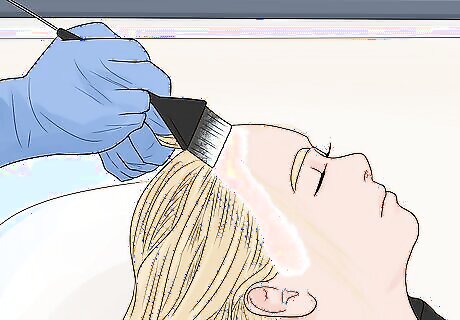
Medications or certain hair products and treatments Certain medications, like blood pressure or gout medications, can cause hair loss as side effects. Also, using too many products in your hair too often can cause damage, as can coloring, relaxing, or perming your hair.











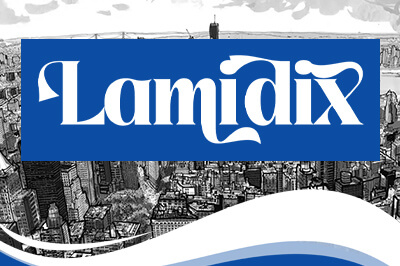


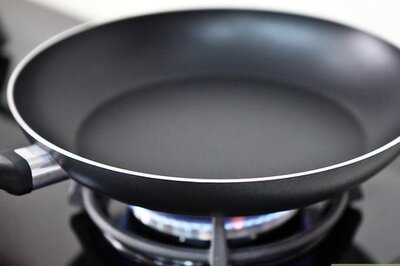
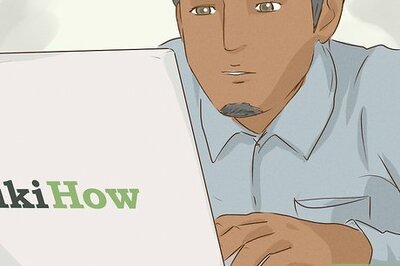
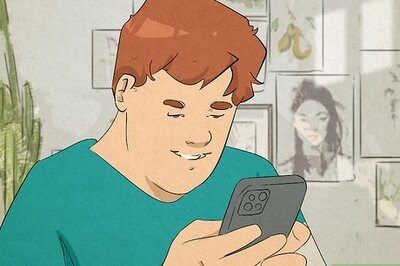

Comments
0 comment